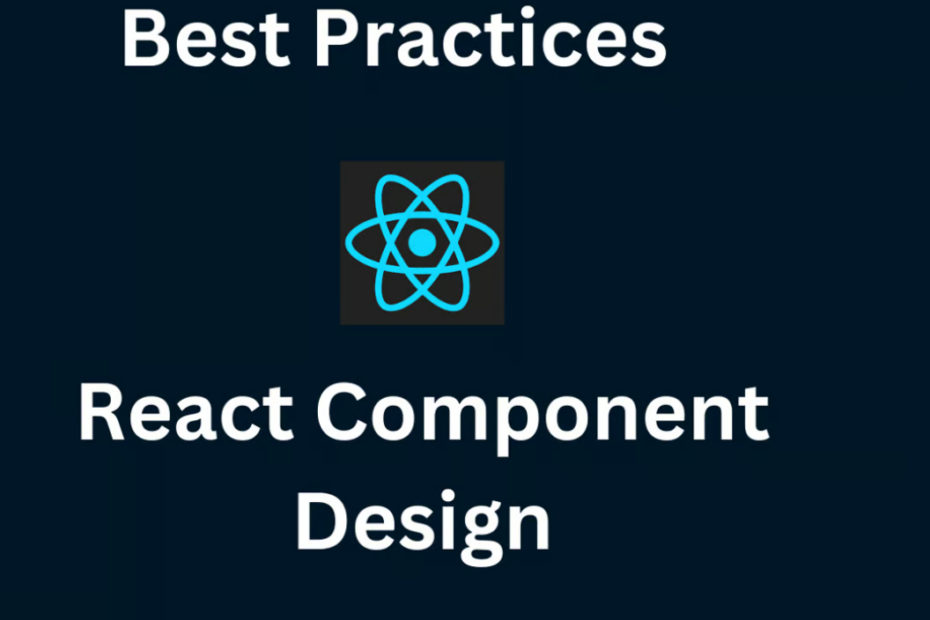React Component Design, a popular JavaScript library for building user interfaces, emphasizes component based architecture. Designing React components efficiently is crucial for maintaining scalable and maintainable codebases. Here are best practices for designing React components:
1. Component Reusability
Creating reusable components is fundamental in React development. Components should be designed to be as generic as possible, allowing them to be used in multiple parts of an application. This not only reduces code duplication but also ensures consistency across the application. Reusable components should accept props to customize their behavior and appearance.
2. Single Responsibility Principle (SRP)
Each component should have a single responsibility, meaning it should do one thing and do it well. This makes components easier to understand, test, and maintain. When a component grows too large or starts to handle multiple responsibilities, consider breaking it into smaller, more focused components.
3. Stateless Functional Components
Whenever possible, use stateless functional components instead of class components. Functional components are simpler and easier to understand because they are just functions that receive props and return JSX. With the introduction of hooks, functional components can also manage state and side effects, making class components less necessary.
4. Proper State Management
State management should be handled at the appropriate level in the component hierarchy. Lift state up to the nearest common ancestor when it needs to be shared between multiple components. For larger applications, consider using state management libraries like Redux, Context API, or Recoil to manage global state in a more structured way.
5. Prop Validation
Use prop validation to ensure components receive the correct types and formats of data. PropTypes is a built-in utility for runtime type checking, which helps catch bugs and provides better documentation. For stricter type checking and improved development experience, consider using TypeScript with React.
6. Avoid Inline Styles
While inline styles are convenient for quick changes, they can lead to maintenance issues and inconsistent design. Instead, use CSS modules, styled-components, or Emotion for styling. These approaches allow for better organization, reusability, and theming of styles, making it easier to maintain a consistent design system.
7. Use Hooks Effectively
Hooks, introduced in React 16.8, offer a powerful way to manage state and side effects in functional components. Use the useState and useEffect hooks to manage local component state and side effects, respectively. Additionally, custom hooks can encapsulate and reuse complex logic, keeping components clean and focused on rendering.
8. Optimized Rendering
Optimize component rendering to improve performance. Use React’s memo function to prevent unnecessary re-renders of functional components by memoizing their output. For class components, use shouldComponentUpdate or PureComponent to achieve similar results. Additionally, leverage React’s useCallback and useMemo hooks to memoize functions and values, preventing unnecessary recalculations.
9. Accessibility
Ensure components are accessible to all users, including those with disabilities. Follow accessibility best practices, such as using semantic HTML elements, managing focus, and providing alternative text for images. Use tools like React Axe to identify and fix accessibility issues in your components.
10. Testing
Thoroughly test components to ensure they work as expected. Use testing libraries like Jest and React Testing Library to write unit and integration tests. Tests should cover various scenarios, including edge cases, to provide confidence that components behave correctly under different conditions. Additionally, consider using end-to-end testing tools like Cypress to test user interactions in the entire application.
11. Documentation
Document your components to make it easier for other developers to understand and use them. Good documentation should include a description of the component, its props, and examples of how to use it. Tools like Storybook can help create interactive documentation, allowing developers to explore and interact with components in isolation.
Enozom, a top software development company, excels in React component design by adhering to industry best practices. They focus on creating reusable, maintainable components, following the Single Responsibility Principle, and using hooks for state management. Enozom prioritizes prop validation, optimized rendering, accessibility, and thorough testing to ensure high-quality, user friendly applications, reflecting their commitment to excellence in React-based solutions.
Conclusion
By following these best practices, you can make a React Component Design that are reusable, maintainable, and efficient. These principles not only improve the quality of your code but also enhance the development experience, making it easier to build and scale React applications.
